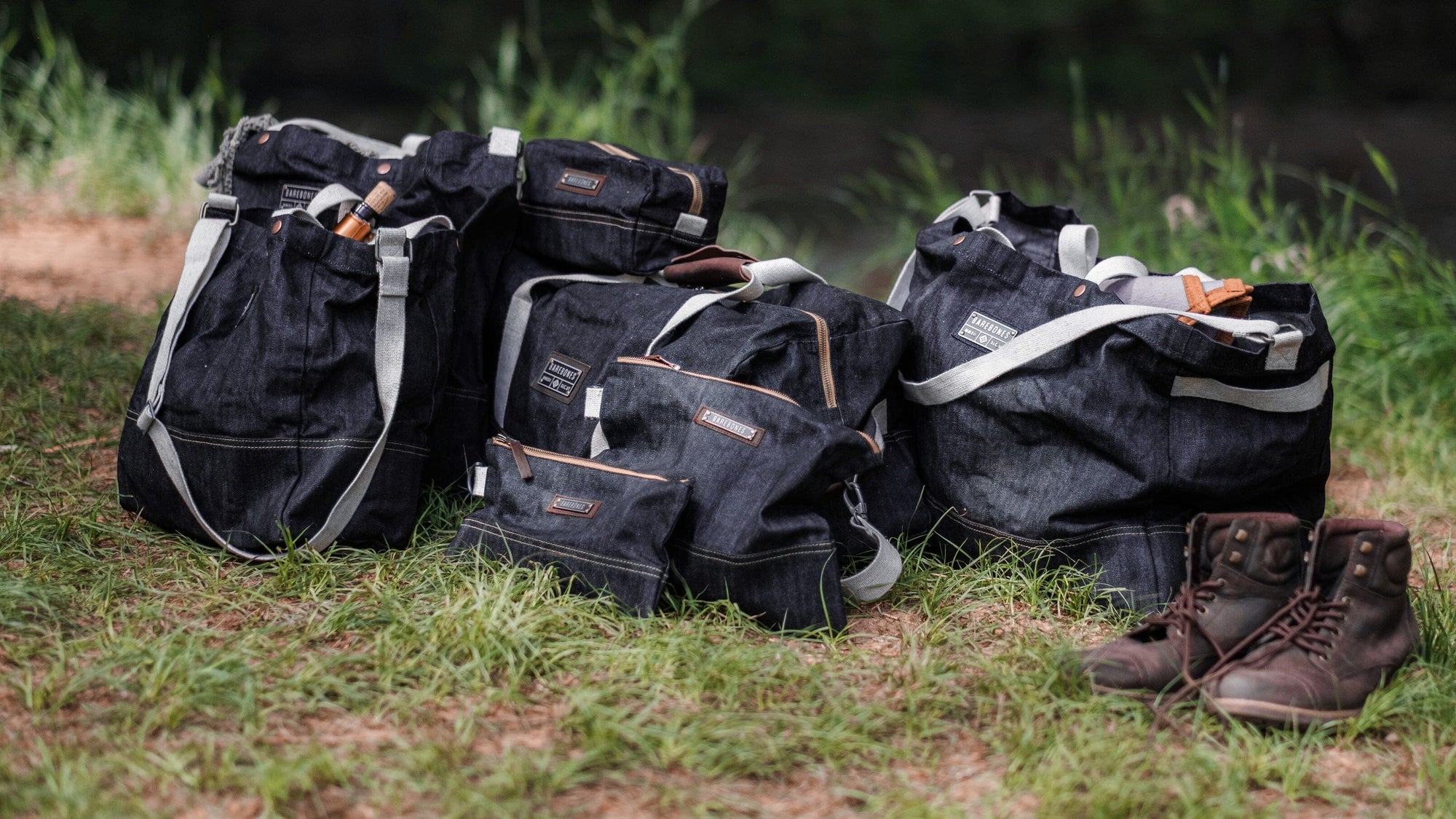
· · ·
Woks have been used in Asian cultures for centuries, and a growing number of international cooks have adopted this brilliant tool, using it in both restaurants and home kitchens. Now, the Barebones Long Handle Wok lets you take this tool on the go - and use it on a campfire or outdoor grill.
What To Cook With A Wok
A wok is best known for stir-fry, as mentioned - but its capabilities go much further. The depth of the wok allows you to use it for many other meals, like deep-frying, braising, or making soups and stews. Additionally, it’s ideal for anything you’re steaming, especially shellfish (add them straight into the bowl). Or add your regular pot-steaming basket and successfully steam vegetables and flaky fish. Its nonstick surface also makes simple breakfasts like scrambled eggs a breeze.
Basically, short of grilling, the wok is an indispensable tool that allows you to steam, saute, braise and stew items with speed over an open fire.
How To Use A Wok
Prepping and preheating is an essential part of cooking with a wok on open fire. Before you heat your wok, coat the entire interior in the nonstick substance that you typically use for cooking: in other words, use butter, coconut oil, avocado oil, or whatever acts as your go-to fat or oil.
Next comes preheating: to preheat the wok, hold it over the campfire so that it gets direct heat from the flame. In a few minutes, your wok will begin to smoke, which lets you know it’s time to get cooking.
Cooking with a wok over an open fire isn’t so much a “let it sit” method, but rather, works best when you consider it like a stir fry: with the wok piping hot, you repeatedly shift or swirl the wok around, keeping the food inside moving. This method stops food from sticking to the bottom or sides of the wok. It also disperses the heat throughout the food instead of being centered in one area.
Our Long Handle Wok comes with a ringed base, allowing you to set it flat on a grill or in the fire. This is a great option when you need to set down your wok or when you’re cooking food that doesn’t need to be shaken (think a soup or steamed vegetables.)
How To Clean A Wok After Use
A steel wok requires similar care to a cast iron pan: Never place it in the dishwasher, don’t use harsh soaps or solvents, and always ensure it’s oiled and dry afterwards.
A wok cleans best when it’s still slightly warm and any residue or food particles are still soft. If you’re in the kitchen, transfer the wok to the sink and rinse with warm water. Scrub off any stuck-on pieces of food with a soft sponge or wok brush, rinse one more time, and dry thoroughly with a towel. (You can also turn a burner on low and let your wok dry.)
If you’re open-fire cooking or unable to access a sink, wipe out with a damp paper towel or cloth, adding a little extra water to remove any food particles. Place near the fire or on another warm surface to fully dry afterwards.
Sometimes, woks need extra seasoning after cooking. To do this, take an oil with a high smoke point (like grape-seed or avocado oil) and add a small amount, rubbing it to coat the interior of your wok. (Note: due to the blued steel design, we recommend a thin coat of oil after each cleaning of our wok.)
Why is a Long Handle Important?
The handle of a wok is a vital feature especially when open-fire cooking: too short and you’ll risk singeing your fingers or catching a spark on your sleeve. Too long, and you’ll risk knocking the wok off its stand as you pass nearby. Plus, the material of the handle is an important consideration. A metal handle will likely get hot, burning your hand if you forget an oven mitt or open fire gloves. We’ve included a durable, sturdy walnut handle attached to the wok bowl with stainless steel and a lengthy copper band to avoid flame damage.
The length of the handle allows you to sit further back from the fire or grill, avoiding smoke inhalation and sparks while still being within reach of your meal. (Meals in woks finish cooking quickly!)
Why Should You Add A Long Handle Wok to Your Cookware Collection?
When we look at a wok versus a similar piece of cookware (such as a frying pan), a few main differences instantly become apparent: the wok has high, sloping walls that keep food (and heat) from escaping. Plus, its heat retention capabilities mean your food is typically cooked in ten minutes or less - a big plus when cooking at the campsite or outdoors for a crowd.
Additionally, when pre-treated correctly, a wok boasts an essentially non-stick surface without the toxic chemicals typically associated with conventional non-stick cookware. This surface allows you to use less oil per cooking session - and the ultra-fast cook time means that food retains more nutrients (and your veggies keep a pleasant crunch).
Whether you have experience cooking with a wok or are new to this tool, a long-handled wok can become your new best friend. The long handle allows you to monitor your cooking without burning your hands, moving the wok when necessary to keep your food stirring while avoiding sparks, hot oil, and even the smoke from your fire.
The wok’s multipurpose capabilities and large capacity make it a no-brainer to add to any kitchen collection. It’s a versatile multi-tool to bring on any outdoor excursion, and its long handle and heat-conducting properties make it an excellent choice for cooking outside over coals or on an open fire.







